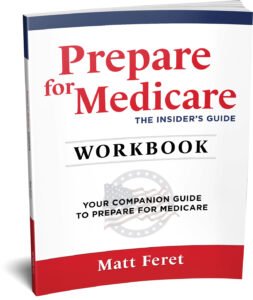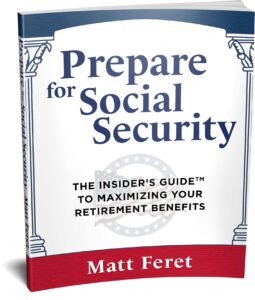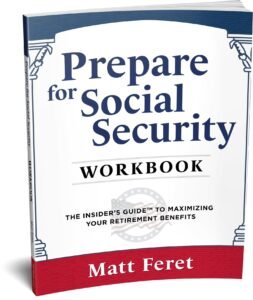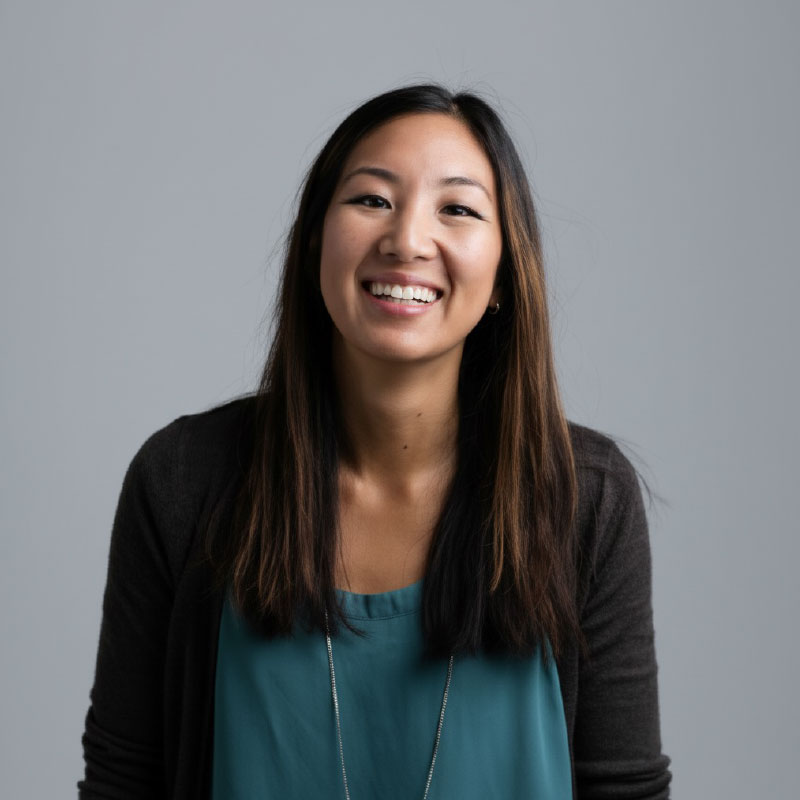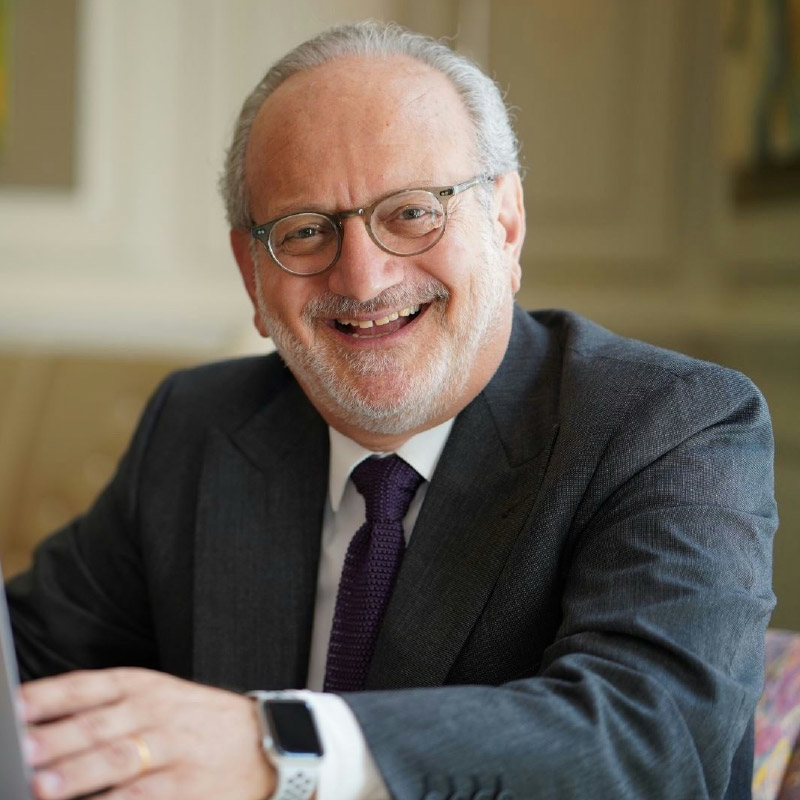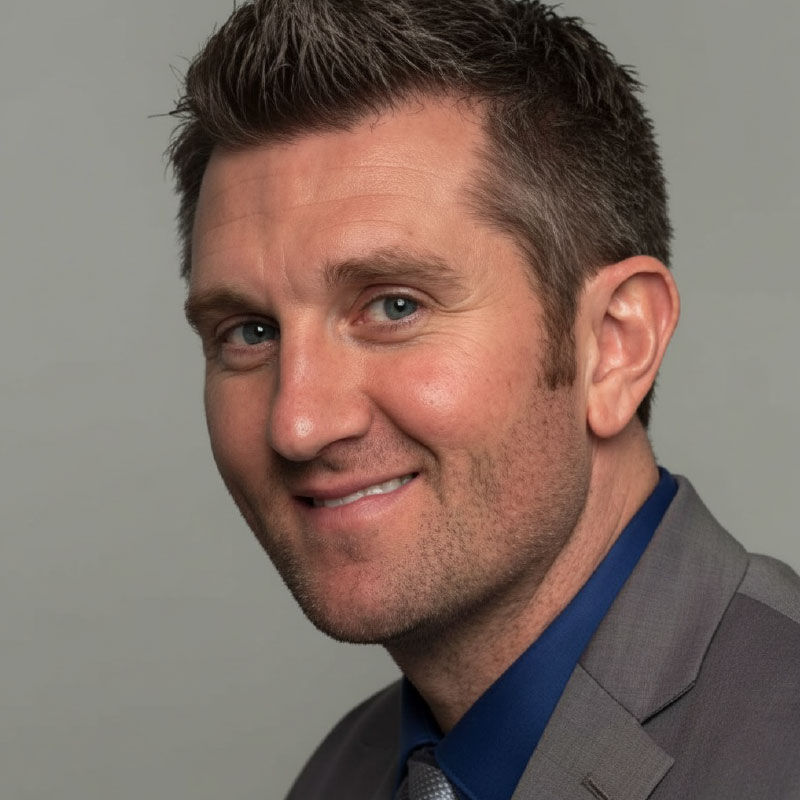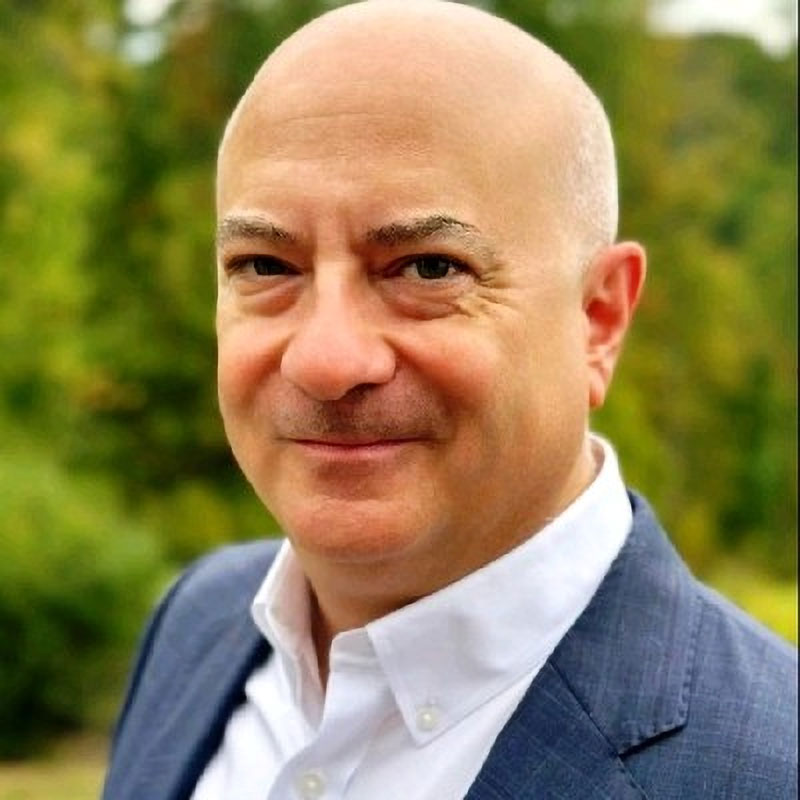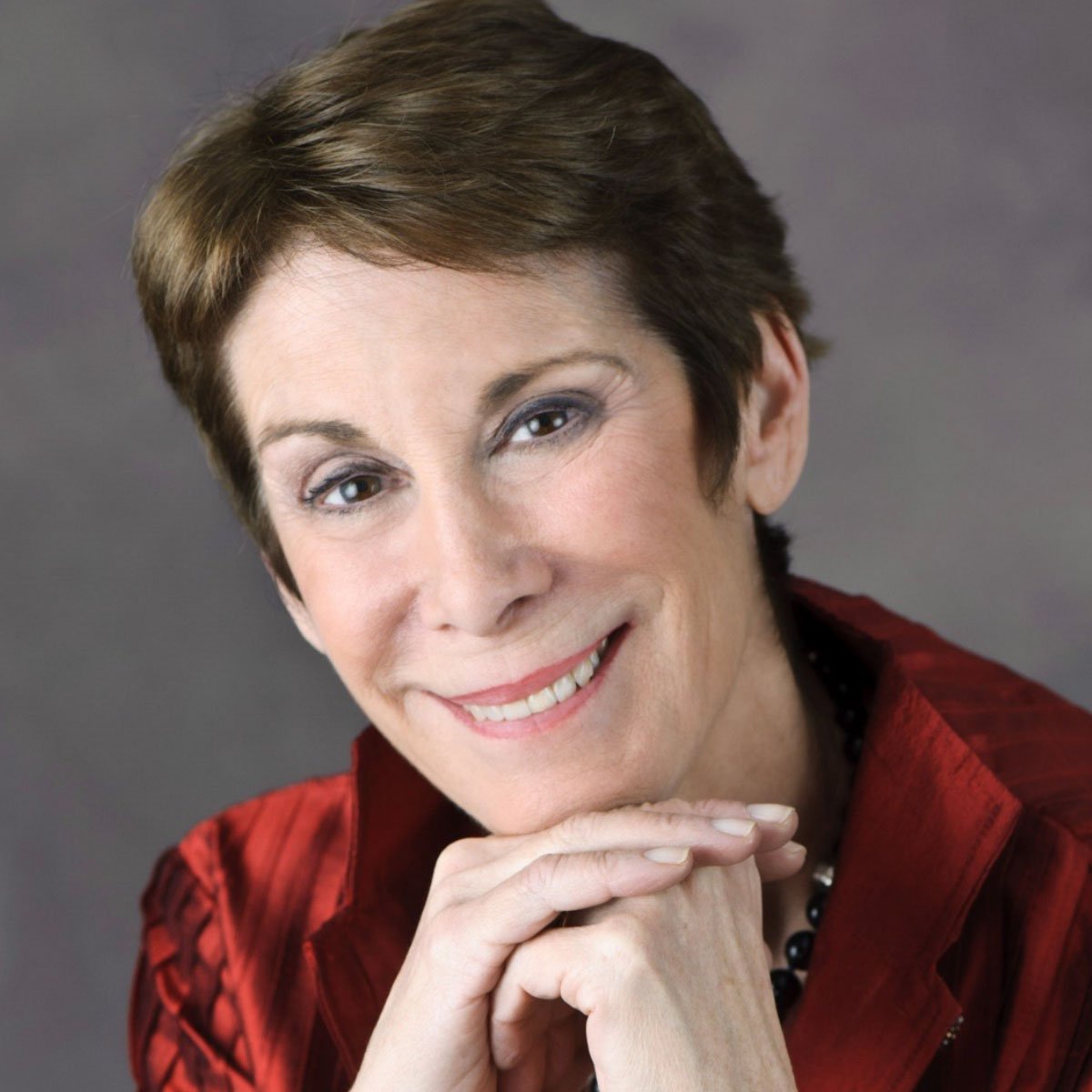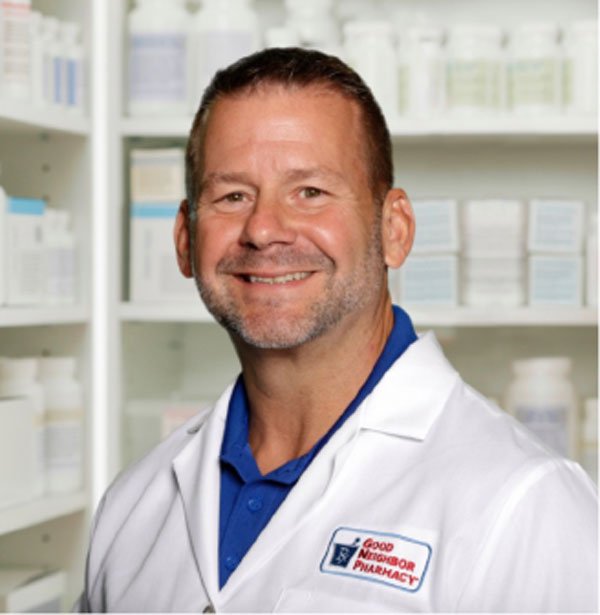#005
Share This:
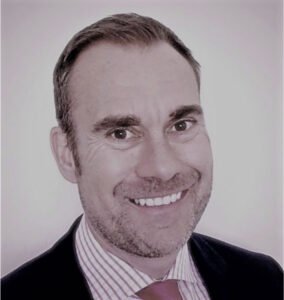
“One of our customers bought (Aloe Care) for his mom. His mom had been dealing with some health issues over the previous couple of months and had been to a doctor a few times. Just wasn't feeling right, tired, just not herself. Long story short, the son bought our unit, plugged it in, and the air quality indicator went off right away. And the gas fireplace, we came to find out, was admitting three, four, five times the amount of gas it should. Nobody had any idea. That's why mom wasn't feeling good. We picked it up, and of course he was able to get in touch with the gas company right away and get that fixed. So those are the sort of stories that we hear that really keep us going, right, and are so rewarding when you think about just trying to help people.”
-Paul Rooney
Paul Rooney is the Executive Vice President of Business Development at Aloe Care, a technology company that’s transforming the future of in-home elder care. Aloe Care’s Smart Hub with voice-activated offers access to 24/7 professional emergency response and built-in motion, temperature, and air quality sensors and a wearable Care Button to get help both inside and outside the home. Just plug it in, and it starts working, while their family app keeps remote caregivers connected.
This episode will give you an insider’s view into Aloe Care’s patented self-described “World’s Most Advanced Medical Alert System” and how it can help caregivers and other family members keep loved ones healthy and safe. Enjoy!
Listen to the episode on Apple Podcasts, Spotify, Deezer, Podcast Addict, Stitcher, Google Podcasts, Amazon Music, Alexa Flash Briefing, iHeart, Acast or on your favorite podcast platform. You can watch the interview on YouTube here.
Brought to you by Prepare for Medicare – The Insider’s Guide book series. Sign up for the Prepare for Medicare Newsletter, an exclusive subscription-only newsletter that delivers the inside scoop to help you stay up-to-date with your Medicare insurance coverage, highlight Medicare news you can use, and reminders for important dates throughout the year. When you sign up, you’ll immediately gain access to seven FREE Medicare checklists.
Quotes:
“The motion activity, and that's not about what my mom's doing, it's just how she's doing. She's up and about doing her daily routines. I know that if there was an anomaly, the data's going to catch that, the machine learning, and it can alert me, "Mom's not moving around the house like she normally does on a Monday. Mom spent a lot more time in the bedroom this week than typical." And that's all about…using data to proactively identify potential health status, health issues before they turn into something more serious.”
-Paul Rooney
“We've tried to minimize, really, and stay away from wearables, because again, people just don't want to wear these things for the most part. So, we have a couple of devices that are placed strategically in the home that capture that motion and environmental data. So, no need to wear anything.”
-Paul Rooney
“We don't have cameras. They said, "We don't want cameras in the home." So that's kind of where a line was drawn. So no cameras, but I think what is interesting as more of the care evolves and the home becomes a center of care and more care is done virtually, I think we'll see gradually, maybe, progression in that, and the use of cameras, perhaps, at least for that virtual care so the physician and clinician can actually see somebody. But for now, there's definitely a hesitancy around cameras in the home, which I totally get.”
-Paul Rooney
“One of our original prototypes had the typical big, red help emergency button on it. We took that out (to test) and people were like, "Really? It has to be red and this big, embarrassing button? I mean, come on." So we said, "You know what? You're right. It doesn't have to look like that. Let's make it look kind of cool, so you can set it on the coffee table and it's almost like this conversation piece." Again, don't make me feel old. So we took a very different design approach.”
-Paul Rooney
#005
Selected Link from the Episode:
Full Show Transcript:
#005: Aloe Care Digital Assistant for Elder Care with Paul Rooney and with Matt Feret
00:00 / 25:34
LEGAL CONDITIONS:
Matt Feret/MF Media, LLC owns the copyright all content and transcripts of The Matt Feret Show, and mattferet.com with all rights reserved, as well as right of publicity. All rights reserved.
No part of this publication may be reproduced or transmitted in any form or by any means, electronic or mechanical, including photocopying, recording, or by any information storage and retrieval system without written permission of the publisher, except for the inclusion of brief quotations in a review. You are welcome to share the below transcript (up to 500 words) in media articles, on your personal website, in a non-commercial article or blog post, and/or on a personal social media account for non-commercial purposes, if you include attribution to “The Matt Feret Show” and link back to the mattferet.com website.
WHAT IS NOT ALLOWED: No one may copy any portion of the content or use Matt Feret’s name, image or likeness for any commercial purpose or use, including without limitation inclusion in any books, e-books, book summaries or synopses, or on a commercial website or social media site (e.g., Facebook, Twitter, Instagram, etc.) that offers or promotes your or another’s products or services.
DISCLAIMER: This publication is in no way sponsored, associated, authorized, approved, endorsed nor, in any way affiliated with any government agency, company, trademarked names, or other marks. Any such mention is for purpose of reference only. Any advice, generalized statistics, or opinions expressed are strictly those of the host and the guest. This publication, The Matt Feret Show nor the mattferet.com website is meant to replace the sage advice of healthcare, insurance, financial planning, accounting, or legal professionals. You are responsible for your financial decisions. It is your sole responsibility to independently evaluate the accuracy, correctness or completeness of the content, services, and products of, and associated with this publication. The thoughts and opinions expressed in this publication are those of the host and guest(s) only and are not the thoughts and opinions of any current or former employer of the host and guest(s) nor is this publication made by, on behalf of, or endorsed or approved by any current or former employer of the host and guest(s).
Matt Feret (00:14):
Hello, everyone. This is Matt Feret, author of the Prepare for Medicare book series, and welcome to another episode of The Matt Feret Show, where I interview insiders and experts to help light a path to a successful retirement. Before we get started, I'd like to thank you in advance for subscribing to The Matt Feret Show podcast on your podcast platform provider of choice. If you're listening to this podcast, put a face with a voice. Don't forget you can actually watch The Matt Feret Show on MattFeret.com and on YouTube. Just search for The Matt Feret Show. I'd also very much appreciate it if you'd subscribe, follow, and like wherever you're seeing or hearing this. Thanks a lot.
Matt Feret (00:55):
My guest today is Paul Rooney, and he's an executive vice president at Aloe Care. Aloe Care creates devices for caregivers to keep tabs on loved ones from afar. Remember the help me, I've fallen and I can't get up commercials? Of course you do. Someone falls, they hit a button on an ugly necklace or a bracelet to talk to somebody, and the ambulance shows up. Simultaneously one of those worst and best TV commercials of all time at the same time. Horrible but catchy. You get the point. Memory jogged? Good.
Matt Feret (01:26):
Well, this isn't that. Paul says there's a better way, and Aloe Care has created it. Aloe Care is a medical alert system that's voice activated, radar activated, fall prevention, motion activity monitoring, and adds in environmental monitoring, air conditioning, and air quality all in one. To top it off, it's got a cell connection that allows loved ones to communicate and check in without a cell phone or a landline from afar. Enjoy. Paul, welcome to the show.
Paul Rooney (01:57):
Hey, Matt. Great to be here. Appreciate you having me. Always good to talk to you.
Matt Feret (02:01):
Yep. Nice to see you. Hey. All right, so let's get this started. Let's start off with what you do, whereabouts do you live, and how do you help people?
Paul Rooney (02:11):
Got it. Okay. A lot there. I'll start with the easy part, okay? Where do I live? I'm in the Phoenix area. Been out here now 25 years.
Matt Feret (02:21):
Oh my gosh. What a change you've seen.
Paul Rooney (02:24):
Yeah. Yeah. But it's been great. It's changed a lot, but it's a good place to be. Recently made a career move, actually. So actually, backing up, I'm a primary caregiver for my mom, okay? Lives by herself. And even though she's literally two miles down the road, Matt, I've struggled over the years with just having peace of mind that she's okay, especially in the old days, if you can remember [inaudible 00:02:49] traveling, getting on an airplane every week and going somewhere, right?
Matt Feret (02:52):
Yep. Yep.
Paul Rooney (02:53):
The good old days. Especially then, it was really hard for me to go throughout my day and have that peace of mind that my mom's okay, knowing she's living by herself and she's had some issues over the years. So after 16 wonderful years with the company, I decided to make a move to a technology startup in a caregiver space that's got a solution of technology innovation for the elderly and their caregivers, people like me struggling with that peace of mind. So I joined Aloe Care back about a year ago, actually. It's coming up on a year. It's been an awesome year. And we're just trying to... Really, two things we talk about a lot, to your question about how are we helping.
Paul Rooney (03:38):
We talk about trying to improve the quality of life for the elderly, particularly people that live alone, dealing with chronic conditions, home bound, et cetera. How do we improve their quality of life? And then on the other side of that, at the same time, how do we provide peace of mind to their caregivers, their family and loved ones? Not necessarily the professional caregivers, but more the family and loved ones, and again, that peace of mind, like I struggled with over the years. So that's what we're trying to do. That's how we're trying to change the world. That's how we're trying to help people. And it's a lot of fun, and it's something, again, I'm very passionate about because I've lived this and lived the struggles of being that primary caregiver.
Matt Feret (04:20):
Yeah. I saw a line that you had online. You mentioned you joined them several months ago after a long time in different healthcare-related industries, and I think your line is, simply put, "We want to transform the future of in-home care for the elderly and their caregivers." So you're a caregiver for your mom and you have been. Tell a story about that and how that really mattered in your journey to figuring out where the caregiver works in the home and how that relates to your mom, and what kind of gaps are there out there right now that you're trying to solve?
Paul Rooney (04:57):
Yeah. A few thoughts there, and that's a great question. First of all, the good news is... Well, I guess that's not putting it the right way, but we are seeing, recently, an acceleration of technology and digital solutions focused on the home, right? So there's this realization, this acceleration around the home as the center of care, and how do we use technology to help with that? Again, the quality of life, the peace of mind that comes with that. So that's good. That's kind of macro level what's going on in the industry right now.
Paul Rooney (05:30):
Personally over the years, I've struggled with a couple of things, and I think anybody that's out there listening to this that's that primary caregiver, they're going to relate to this. So it's something as simple as trying to get ahold of my mom. Okay? Just giving her a call, touching base with her. Typically what would happen is the landline, it's not hung up. I get the fast busy signal alert. It's not charged, or she doesn't know where it is, right?
Matt Feret (05:55):
Yeah.
Paul Rooney (05:56):
It's useless. Cell phone, forget it. I think it's lost many months ago, so that's not a way to get ahold. [inaudible 00:06:03]-
Matt Feret (06:04):
I always say my mom's cell phone is basically a pager from the late '80s.
Paul Rooney (06:09):
Exactly.
Matt Feret (06:09):
You call it, and then no one ever picks up. She notices or something happens, and then I don't know, two minutes, two years later, she'll call me back.
Paul Rooney (06:19):
That's exactly right. And then if you leave a message, forget it. My mom's never checking that answering machine. So I just struggled with that. And thankfully, I could get in the car and be over there in a few minutes and knock on the door like, "Mom, answer your phone. What's going on?" But others aren't as fortunate. So just that kind of engagement, that communication I struggled with over the years. And then frankly, the other thing that I've really experienced as a caregiver myself, and we hear this every day from caregivers, is, "My mom," that elderly person, your loved one doesn't want to be a burden.
Paul Rooney (06:56):
Okay? She doesn't want to pick up the phone and call me and say, "Paul, take the trash out," or, "Paul, can you get my mail today? Because I'm not feeling very good, and I don't want to walk out to the mailbox." They don't want to be a burden. Okay? They don't want to feel old. We can talk about that a little bit, too. They don't want to feel old, but they definitely don't want to be a burden. And I'll tell you a true story, Matt. Again, Phoenix area, right? Summers, you've experienced it.
Matt Feret (07:19):
Yeah.
Paul Rooney (07:19):
Hot. Terrible, right? This is a couple summers ago. I'm traveling. My mom's AC goes out. Okay? She doesn't pick up the phone and call me. She knows I'm busy, I'm traveling, doesn't want to be that burden, doesn't call me. So a couple days later, I'm back in town. I go over to the house. It's 90 plus degrees in there. I'm like, "Mom, what is going on?" She is dehydrated. We're taking a trip to the ER, right? Didn't want to call me. Didn't want to be a burden, suffered through it. And those are the sorts of experiences where I'm like, wow, there's got to be a better way to do this. There's got to be some technology, some innovation to help me, again, peace of mind and quality of life for my mom to help her on her side. And these are some of the things we're working on.
Matt Feret (08:05):
So you are two miles from your mom's house, but what your company does is make sure that... I'm 12 hours from my mom in a car. Walk me through the product. Walk me through what it does, what it can do, and what can it do for a guy like me or someone in our audience who's away from Mom or Dad or someone they love, and they want to keep tabs on them or help them from afar. They just don't know how to do it. Walk me through that.
Paul Rooney (08:33):
Yeah. So what's interesting with COVID is, even though I'm a couple miles from my mom, we all became remote caregivers to one degree or another, because we just weren't going in the home like we used to, for all the obvious reasons. So that was one of the accelerators to what we were doing, too. So within that, what we said is, "Okay, how do we have something in the elderly's home that's going to make them feel safe, but it also really helps them with communication and engagement with their loved ones? So we took, really, as our base, we'll all smile at this, the old help, I've fallen and I can't get up. We took that and said, "Listen, there is a need for that."
Paul Rooney (09:11):
And my mom had that, and thankfully wore her button and fell at the mailbox one night and was able to push that button, and the paramedics showed up, and thank goodness they did. It saved her life. But we looked at that and said, "There's got to be a better way to do that where maybe you don't need to wear that button," because the data would show 20, 25% of people never wear that button. They're given the system and they put it in a drawer somewhere.
Matt Feret (09:32):
I don't think I'd want to wear it. Yeah. I mean, didn't it look like an old librarian thing from elementary school? Yeah.
Paul Rooney (09:37):
Don't make me feel old.
Matt Feret (09:39):
[crosstalk 00:09:39].
Paul Rooney (09:39):
So we said, "There's got to be a better way to do that." So our system is voice first. You don't need to wear that button. If you need help in an emergency, you reach out verbally. It'll trigger it. We've got some radar devices that'll automatically detect the fall. So we've really tried to bring some new technology and innovation to that space. So we use that PERS, personal emergency response system, as our base, but then we built on top of that environmental monitoring. I touched on it with the AC, right? Air temperature, air quality. How's the home? Is it a safe environment for your loved one to be in? Okay? Let's start there, kind of basic stuff.
Paul Rooney (10:08):
And then the motion activity, and that's not about what my mom's doing, it's just how she's doing. She's up and about doing her daily routines. Great. I know that if there was an anomaly, the data's going to catch that, the machine learning, and it can alert me, "Mom's not moving around the house like she normally does on a Monday. Mom spent a lot more time in the bedroom this week than typical." And that's all about, again, how she's doing, not what she's doing, and using data to proactively identify potential health status, health issues before they turn into something more serious.
Matt Feret (10:44):
So how does that happen? Do you have little devices all over the house? Do you have trackers? Are they wearables? Do they integrate with a watch? Is it a sticker? What is it? How do you do this?
Paul Rooney (10:56):
Great question. So we've tried to minimize, really, and stay away from wearables, because again, people just don't want to wear these things for the most part. So we have a couple of devices that are placed strategically in the home that capture that motion and environmental data. So no need to wear anything. And that's how we're capturing the data. And then on the back end, the machine learning's comparing like day to like day and understanding what those habits and routines are. And you know what? Hopefully, it just sits in the background and you never use it, right? It just sits there on the coffee table. Great.
Paul Rooney (11:27):
But it's providing that peace of mind, that quality of life and safety aspects for the senior. But then what we did also, we built on top of that communication. So it's like a big cell phone, so it's very simple for my mom to push the speed dial button. It comes right to me. It pops me an alert, "Hey, Mom wants you to give her a call. Check in with her." And I call her right back to what we call our hub, and we have a communication right through the hub. It auto answers. I don't have to worry about where her landline is, where her cell phone is. It's right through the hub, and we can have a conversation through that. So it just makes that communication engagement that much easier.
Matt Feret (12:03):
If someone has got a couple siblings, can you share? How does that work?
Paul Rooney (12:08):
That's a super, super question. So thankfully, yes. I've got a brother. Now, he is in Virginia, so far away. But what we realized is, there's this caregiver circle, and it could be other siblings. It could be neighbors, other loved ones. So yes, we build that into the app that we provide to those caregivers so everybody can see exactly what's going on. Everybody can see who's talked to, in my case, Mom most recently, how Mom's doing, and it's all tracked there in one centralized location so everybody's seeing the same thing. Yeah. That's important.
Matt Feret (12:41):
Tell me a little bit more about what it does. So you mentioned air quality. Sounds like air quality, heat, movement, fall prevention you mentioned.
Paul Rooney (12:54):
Yes.
Matt Feret (12:55):
And then immediate contact with caregivers or loved ones. What am I missing?
Paul Rooney (13:00):
Then that communication aspect, so that's speed dial right to a caregiver. That's a key feature. And we're seeing that's where, especially with COVID, people not coming in their home, social isolation, all those concerns. We're all reading about the mental health aspect of this pandemic. The fact that we make it easy for the elderly to reach out to their loved ones, they're really grasping onto that and using it for that feature.
Matt Feret (13:28):
What do people ask you? I mean, I'm sitting here thinking this might be good for my mom, but like you said, she might say, "I'm not old. Get out of here, Matt. Leave me alone. I got a cell phone. I know how to handle it." To someone like that who maybe you notice, but they don't, and they don't want that help, what... I know. Again, I'm dating myself, of help, I've fallen and I can't get up. They don't want that. So how do you get past someone who-
Paul Rooney (14:01):
Yeah.
Matt Feret (14:01):
... may not necessarily feel like they want it? What else could it be? Just a home monitoring piece, or how have you heard stories of that happening?
Paul Rooney (14:09):
It started with how we approached this from the very beginning and the research we did with the elderly and the caregivers about, what features would they embrace? What features would they use? But something quite as simple as, what does it need to look like? So one of our original prototypes had the typical big, red help emergency button on it, right? And we took that out, and the elderly are like, "Really? It has to be red and this big, embarrassing button? I mean, come on." So we said, "You know what? You're right. It doesn't have to look like that. Let's make it look kind of cool, right, so you can set it on the coffee table and it's almost like this conversation piece." Again, don't make me feel old. So we took a very different design approach, so that helps with some of that.
Paul Rooney (14:49):
"Okay. All right. This isn't as bad as these other things I've seen. I don't mind putting this in my home." But then, again, building on top of that, they're embracing it as a communication and way to reach out and communicate with their loved ones, and making that as easy as possible for them. So that's where you see the elderly that may have been reluctant for various reasons. And I get it, in the past saying, "You know what? Yeah, this is going to make my life better, so I'm okay with it in the home."
Paul Rooney (15:19):
We don't have cameras. They said, "We don't want cameras in the home." So that's kind of where a line was drawn. So no cameras, but I think what is interesting as more of the care evolves and the home becomes a center of care and more care is done virtually, I think we'll see gradually, maybe, progression in that, and the use of cameras, perhaps, at least for that virtual care so the physician and clinician can actually see somebody. But for now, there's definitely a hesitancy around cameras in the home, which I totally get.
Matt Feret (15:50):
Yeah, I get it too. Data privacy. So all the Alexa and Siri stuff in the news, I mean, does it record data? Does it keep it? Does it go on and quietly record you when it shouldn't be? How does all that work?
Paul Rooney (16:04):
Yeah. It's interesting, because we did hear a lot of people ask about Alexa and some of the concerns there. So we're very, very careful, very aware of that, and with HIPAA and everything else in our industry, very careful with the data. So no, we're not listening in and doing some of those things that people have concerns about. We're very, very careful about that. Absolutely.
Matt Feret (16:28):
So talk to me about integration with other at-home pieces. What do you think even now, or in the future, where is this going, this care at the home? Facebook has got entire systems that people can use to communicate. I mean, we're on a Zoom right now talking thousands of miles away. There's a lot of everything coming into the home, home visits from Medicare plan, people trying to set up home visits to make sure that medications are being taken. What's the integration of this look like? What's your vision for this product moving forward, I guess, short term, and then think about it a little longer?
Paul Rooney (17:06):
Yeah. So within our product, within our platform, we've built in Bluetooth and Zigbee, and the idea there is there's other services, other solutions that are going to be in the home that we will need to integrate as the care needs progress. So maybe initially, somebody's at home and they want our device for the communication features, that safety feature. Great. And then as their needs evolve, now maybe they've got a glucose monitor, blood pressure, other sorts of devices that are in the home. So with our Bluetooth technology, we can easily integrate with that and pull that data into the data that we typically have to provide a more comprehensive view of what's going on in the home, and a more comprehensive view of the care and the needs that are there.
Paul Rooney (17:51):
And that really helps, again, as more and more care is being delivered in the home, trying to provide that full picture and provide clinicians as much data as possible so they know what's going on when they're doing their virtual care or working with their patients. Very important. And we're seeing some really cool evolution there. There's some wearable patches that are very small that capture respiratory and other key information that we don't capture. But we're integrating with leading companies in that remote patient monitoring space to augment the data that we capture.
Matt Feret (18:30):
Tell me some stories about how it's been used. I mean, I'm sure you got a million of them.
Paul Rooney (18:37):
Yeah, we do. A couple interesting things. So one is, what we're finding is about 45% of the time when somebody indicates, "Hey, I need help," what typically happened would be a speed dial. If you were wearing a button, it was a speed dial to 911, in essence. But what we find is, again, about 45% of the time, that person doesn't need 911 coming to the house, kicking the door down, and taking a trip in the ambulance to the hospital, and all the costs and everything else associated with that. They just need a little help. Maybe their arthritis is acting up, they're locked up, they're stuck on the couch, right? They just need somebody to come help them, but not 911. So we're seeing some really interesting things with that, and we make it very easy for the elderly to reach out to their loved ones in that sort of situation, not necessarily an emergency, right?
Paul Rooney (19:24):
So that's been really interesting. Let's see. Some other real-life stories. We had a great story. One of our customers, I believe it was a gentleman bought it for his mom. His mom had been dealing with some health issues over the previous couple of months and had been to a doctor a few times. Just wasn't feeling right, tired, just not herself. Long story short, the son bought our unit, plugged it in, and the air quality indicator went off right away. And the gas fireplace, we came to find out, was admitting three, four, five times the amount of gas it should. Nobody had any idea. That's why mom wasn't feeling good. We picked it up, and of course he was able to get in touch with the gas company right away and get that fixed. So those are the sort of stories that we hear that really keep us going, right, and are so rewarding when you think about just trying to help people.
Matt Feret (20:21):
So this is something I can buy? This is something anyone can buy?
Paul Rooney (20:25):
Yeah, absolutely. You can. We sell it right off of our website. We have some other partnerships, strategic partnerships, companies that are dealing with the elderly, supporting caregivers. So there's a variety of ways to obtain our product, but absolutely you can buy it direct from us.
Matt Feret (20:46):
Let's say I'm a caregiver, and I don't know, I'm maybe 12 hours away, and I'm worried about my mom getting a little older. I go on your website. I buy the product. I set it up next time I'm down. How do I pitch this to my mom? How do I pitch it? Give me the pitch.
Paul Rooney (21:06):
"Mom, I'm going to make it easy for you and I to talk. We can talk right through this hub. You press this button, and we'll be connected. It auto answers. You don't even have to get off the couch, Mom, when I call you anymore. We can talk right through this hub. And then on top of that, if you ever need emergency support or if you need help with anything, it is literally a voice away, if you will. Again, Mom, you don't need to wear a button. It's a voice away." Emergency is our trigger word. That'll trigger the system and get your mom the help she needs, and sit in the background and just meant to be there to help if needed. [crosstalk 00:21:46]-
Matt Feret (21:45):
Paul, what else? What other questions did I not asked that I should have that you want to talk about?
Paul Rooney (21:52):
Yeah. Some really good questions. I think a couple other points that maybe we didn't touch on is, I think, again, being that caregiver, being in that role and others that are in that caregiver role, one is, there's a lot of us out there playing this caregiver role. There's different data points. There's 45, 50 million of us that play, to one degree or another, this primary caregiver role. So you're not alone, okay? We all struggle with it, the work-life balance. So what's interesting is, if you're out there, you're struggling with this role, we're seeing some innovative employers starting to think about that caregiver support role, right?
Paul Rooney (22:32):
They've done a great job on the maternity, paternity side of benefits and support. Now they're saying, "You know what? I've got my employees that are dealing with this caregiver role, and it's impacting them negatively and it's hard to balance everything, so how can I support them?" So again, you're not alone. If you need help, get the help. And the good news is, there is technology out there now that can help. There's a lot of different solutions out there. Obviously love if you check us out. But there's help to make life better for your loved one, and again, peace of mind. I feel like I'm a broken record, but peace of mind for you as that caregiver.
Matt Feret (23:11):
How do we find you on the internet, and how do we find more about your company and about you and what you do? How do we find you?
Paul Rooney (23:19):
All right. Well, listen, I'm out there on LinkedIn, Paul Rooney. Check me out. And then obviously, please go check out our website, AloeCare.com. Take a look at our products, see what we're doing. I think you'll find it cool, helpful. Always open to other ideas as people are struggling with this caregiver role. We're always looking to innovate and add to what we're doing to try and help more and more people.
Matt Feret (23:46):
Awesome. Thanks a lot, Paul. I appreciate you being on the show.
Paul Rooney (23:49):
Matt, super. Great to connect, okay? Thanks for having me.
Matt Feret (23:52):
My thanks to Paul Rooney for an awesome conversation. Make sure to check out Aloe Care at AloeCare.com. You can also check out all the show notes and websites discussed during the show at MattFeret.com. And of course, please subscribe to the podcast on your podcast provider platform of choice. I'd also really appreciate it if you'd subscribe to The Matt Feret Show YouTube channel, which you can get to through MattFeret.com or just by searching for it on YouTube. Until next time, to your wealth, wisdom, and wellness. I'm Matt Feret, and thanks for tuning in.
Matt Feret (24:32):
The Matt Feret Show, related content, publications, and MF Media LLC is in no way associated, endorsed, or authorized by any governmental agency, including the Social Security Administration, the Department of Health and Human Services, or the Centers for Medicare and Medicaid Services. The Matt Feret Show is in no way associated with, authorized, approved, endorsed, nor in any way affiliated with any company, trademark names, or other marks mentioned or referenced in or on The Matt Feret Show.
Matt Feret (25:01):
Any such mention is for purpose of reference only. Any advice, generalized statistics, or opinions expressed are strictly those of the host and guests of The Matt Feret Show. Although every effort has been made to ensure the contents of The Matt Feret Show and related content are correct and complete, laws and regulations change quickly and often. The ideas and opinions expressed on The Matt Feret Show aren't meant to replace the sage advice of healthcare, insurance, financial planning, accounting, or legal professionals. You are responsible for your financial decisions.
Matt Feret (25:34):
It is your sole responsibility to independently evaluate the accuracy, correctness, or completeness of the content, services, and products of and associated with The Matt Feret Show, MF Media LLC, and any related content or publications. The thoughts and opinions expressed on The Matt Feret Show are those of the host and The Matt Feret Show guests only, and are not the thoughts and opinions of any current or former employer of the host or guests of The Matt Feret Show, nor is The Matt Feret Show made by, on behalf of, or endorsed or approved by any current or former employer of the host or guests of The Matt Feret Show.

